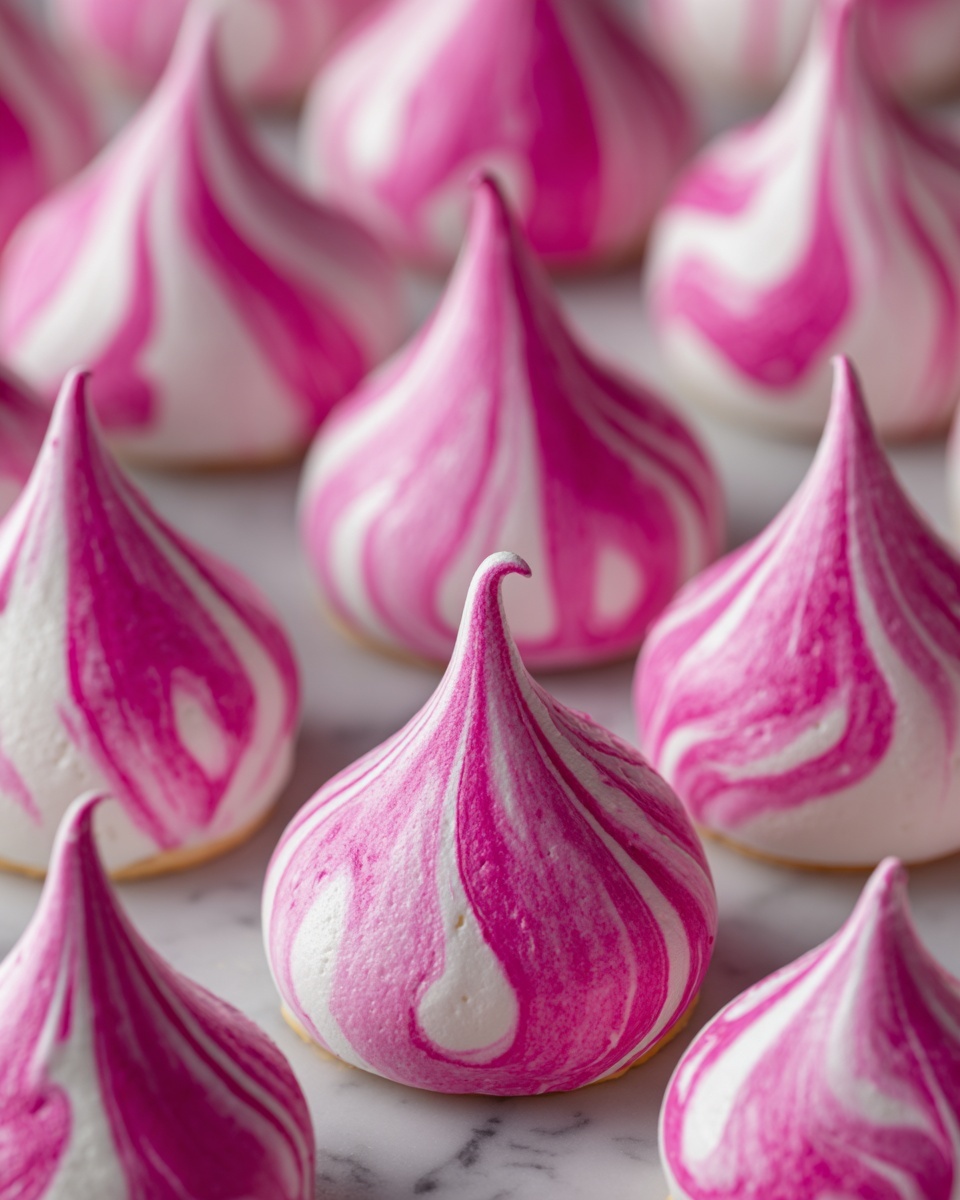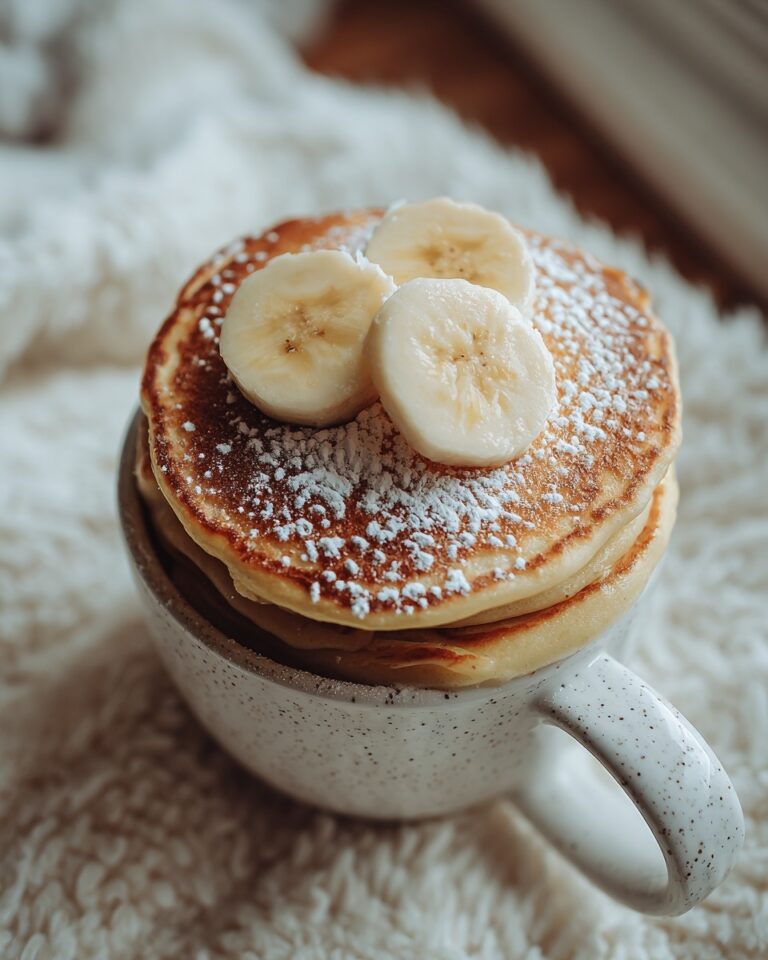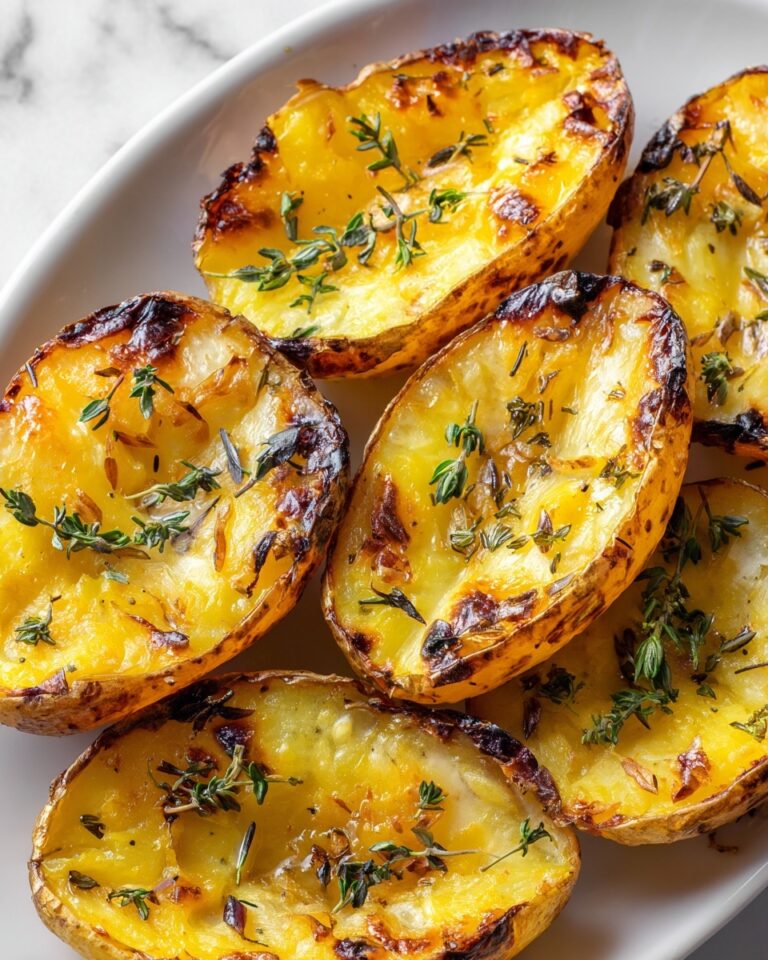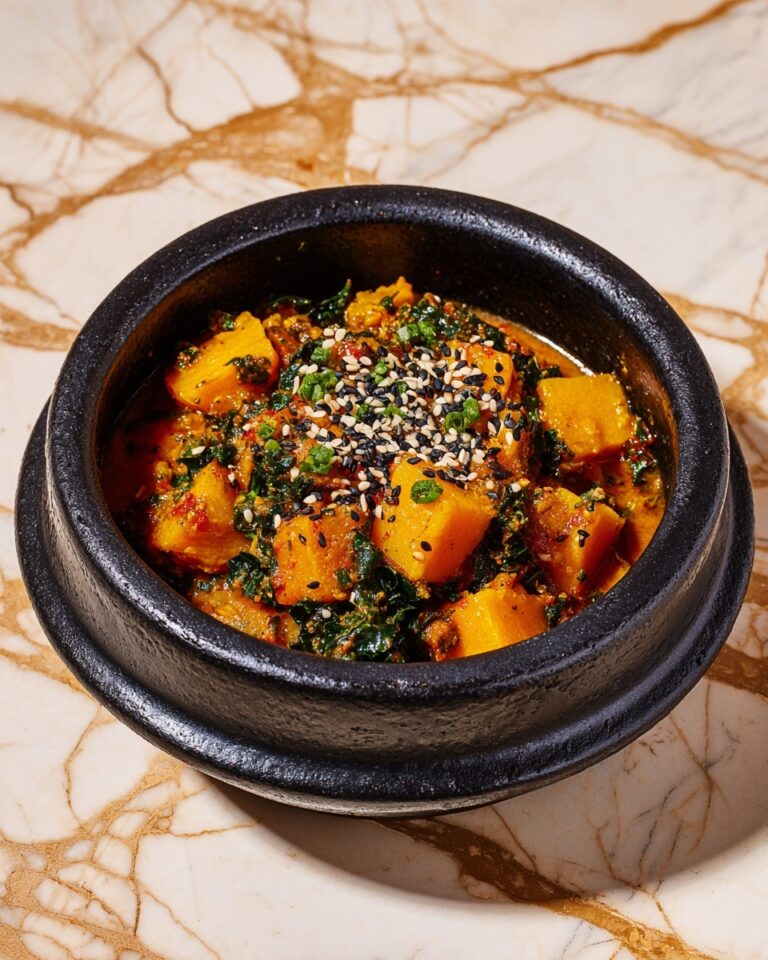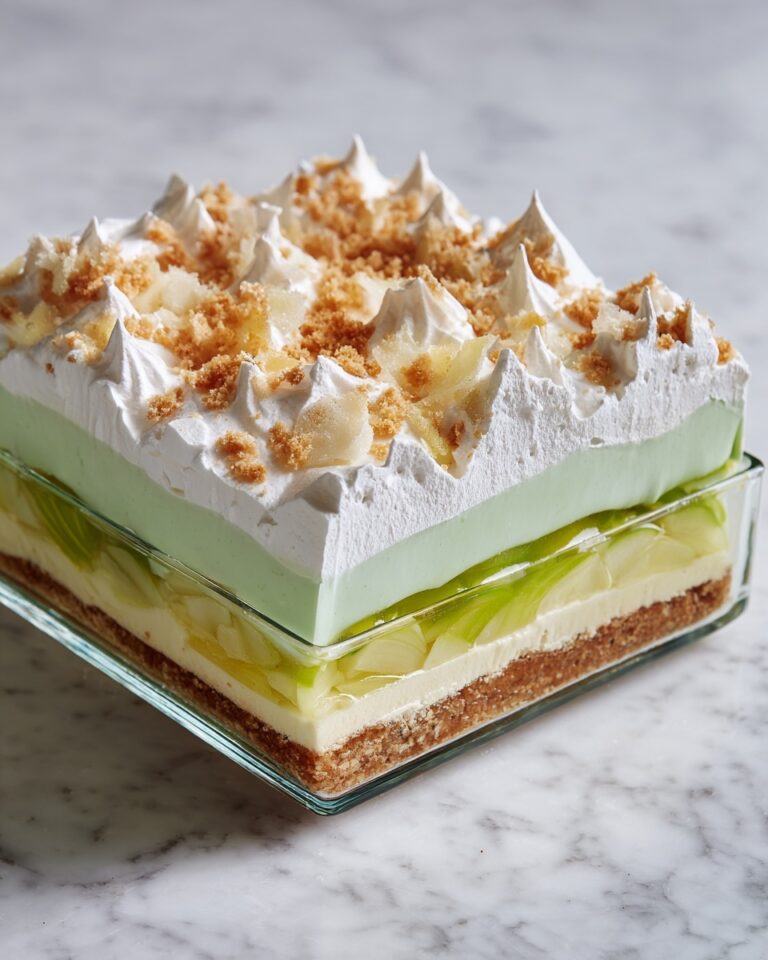If you’ve ever thought that meringues were off-limits without eggs, prepare to be delighted because this Vegan Meringue Recipe is an absolute game-changer. Light, airy, and irresistibly sweet, these meringues are made using aquafaba — the magical liquid you find in chickpea cans — creating the perfect plant-based alternative that doesn’t skimp on texture or flavor. Whether you’re vegan, avoiding eggs, or simply curious, this recipe promises a crisp, melt-in-your-mouth treat that’s as fun to make as it is to eat.
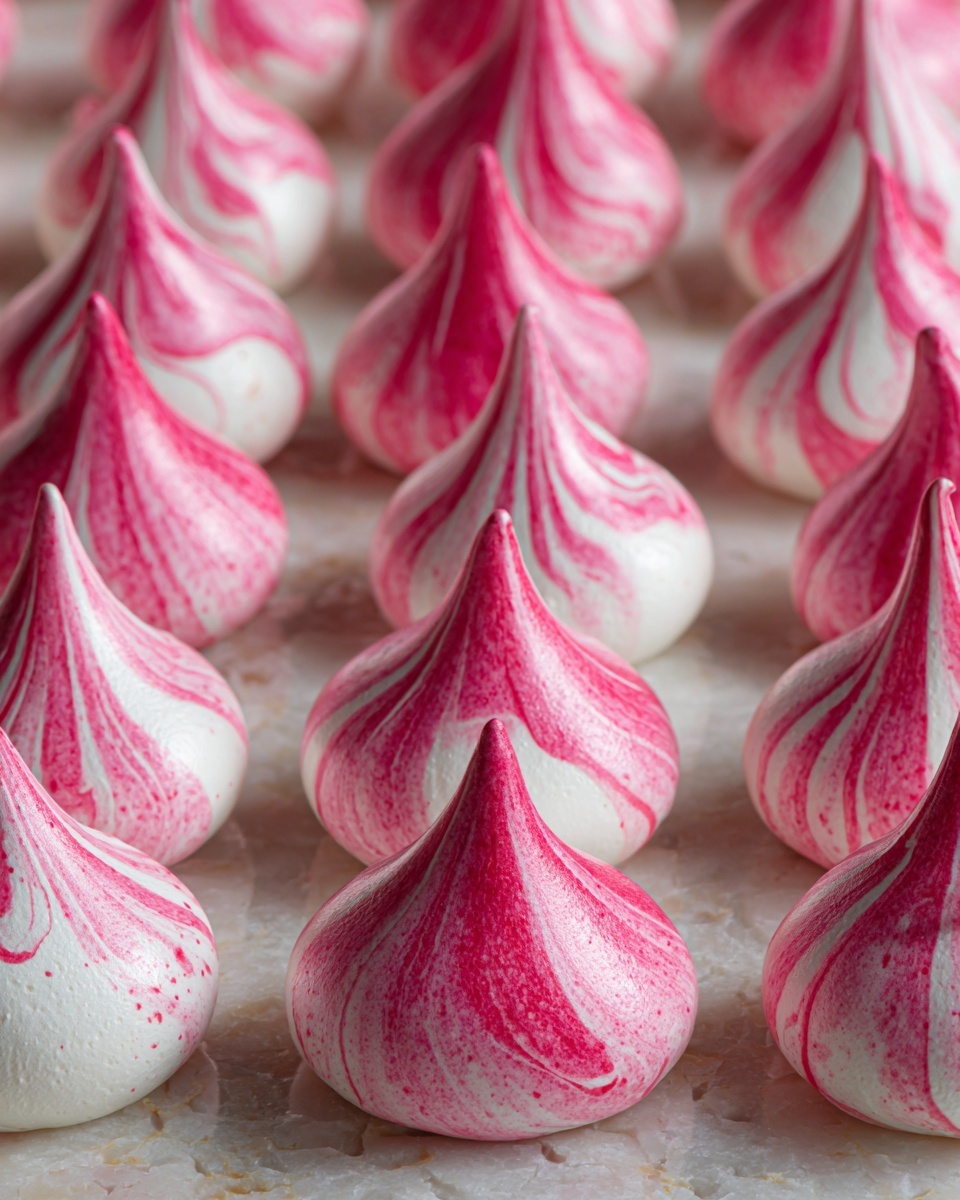
Ingredients You’ll Need
Getting the right balance of ingredients is key, and luckily, this recipe keeps it wonderfully simple. Each component plays a vital role in achieving the signature fluffy yet firm texture of a classic meringue, without any eggs.
- Aquafaba (¾ cup): The secret star that whips up just like egg whites, providing incredible volume and structure.
- Cream of tartar (½ teaspoon): Helps stabilize the aquafaba foam for those perfect peaks every time.
- Powdered sugar (½ cup): Sweetens and adds a smooth texture; superfine granulated sugar can be used too.
- Vanilla extract (1 teaspoon): Elevates the flavor with a warm, aromatic touch that pairs beautifully with the sweetness.
How to Make Vegan Meringue Recipe
Step 1: Prepare Your Oven and Ingredients
Start by preheating your oven to a low 200°F and line a baking sheet with parchment paper; this low heat slowly dries the meringues without browning them. Ensuring your mixing bowl is completely clean and grease-free is essential—any grease can prevent your aquafaba from whipping properly.
Step 2: Whip the Aquafaba and Cream of Tartar
Pour the aquafaba into your bowl and add the cream of tartar. Using a hand or stand mixer on medium-high speed, beat the mixture for about 5 to 8 minutes until you see soft peaks forming. This is similar to the first stage when whipping egg whites and signals you’re on the right track.
Step 3: Add the Sugar Gradually
Slowly add the powdered sugar, one tablespoon at a time, while continuing to whip. This part is where patience really pays off—whip for up to 10 minutes until the mixture holds stiff peaks and shimmers with a glossy shine. The sugar’s gradual incorporation ensures a stable, sweet meringue.
Step 4: Flavor with Vanilla
Once you’ve reached those stiff peaks, gently beat in the vanilla extract to infuse your meringue with its signature warmth and aroma. This final dash makes a world of difference, turning simple sugar and aquafaba into a dessert-worthy masterpiece.
Step 5: Shape and Bake
Spoon or pipe your meringue batter onto the parchment-lined baking sheet in little dollops or creative shapes—whatever feels fun! Bake for 1 ½ to 2 hours, or until the meringues are dry to the touch and lift easily from the paper. Turn off the oven and allow them to cool inside with the door slightly open; this slow cooling step helps to achieve that perfectly crisp finish.
How to Serve Vegan Meringue Recipe
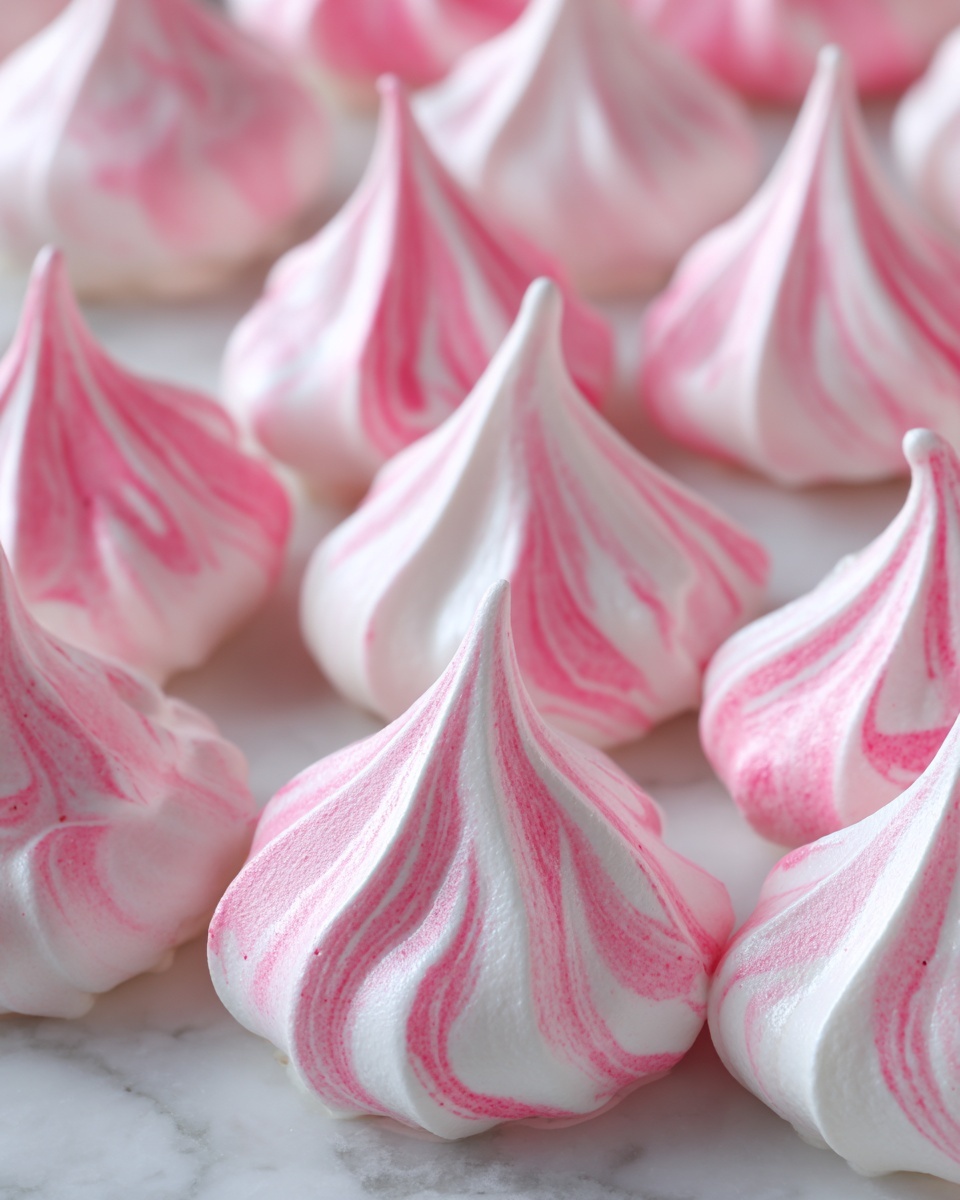
Garnishes
Simple on their own, these meringues also serve as a perfect canvas for garnishes. Sprinkle with a little cocoa powder, crushed nuts, or edible flower petals for a festive look. Fresh berries or a dusting of cinnamon can add a delightful contrast too.
Side Dishes
Pair your vegan meringues with fresh fruit compote, a dollop of coconut whipped cream, or alongside a vegan chocolate mousse for a more decadent dessert spread. Their light texture balances richer flavors perfectly, making them a versatile choice.
Creative Ways to Present
Transform this basic Vegan Meringue Recipe into pavlovas by topping the baked meringues with layers of fruit and cream, or break them into chunks and fold into vegan ice cream for an exciting crunch. They also work wonderfully crushed over dairy-free yogurt for a flair of sweetness and texture.
Make Ahead and Storage
Storing Leftovers
Keep your cooled meringues in an airtight container at room temperature for up to three days. It’s important to avoid storing them in humid environments, as moisture will soften their beloved crisp exterior.
Freezing
If you want to keep them longer, freezing is an option. Place the meringues in an airtight container and freeze for up to a month. Thaw at room temperature before serving—this will help them retain their delicate crunch.
Reheating
Because these meringues are best enjoyed crisp, try briefly warming them in a low oven (around 200°F) for 5 to 10 minutes if they’ve lost some crunch. Just be careful not to overheat, or they could brown or melt.
FAQs
What exactly is aquafaba and why use it in this Vegan Meringue Recipe?
Aquafaba is the viscous water from cooked chickpeas, and it whips up just like egg whites. It’s perfect for this vegan meringue because it mimics the protein structure needed to trap air and hold shape, making an egg-free, plant-based meringue possible.
Can I use sugar substitutes in this recipe?
Powdered sugar is recommended for the best texture, but superfine granulated sugar also works well. Sugar substitutes that don’t dissolve easily or caramelize differently might affect the meringue’s stability and sweetness.
Why do I need to add cream of tartar?
Cream of tartar stabilizes the aquafaba foam, helping the meringue hold its shape and build those stiff peaks critical to a successful bake. Without it, your meringues might collapse or spread too much.
Can I make this recipe on a humid day?
Humidity can be tricky because moisture causes meringues to soften. It’s best to make them on dry days or use a dehumidifier if you have one. Proper storage in airtight containers also minimizes moisture absorption.
How do I know when meringues are done baking?
The meringues are ready when they feel dry and easily lift from the parchment paper without sticking. They should sound hollow if you gently tap the bottom. Cooling them in the oven with the door slightly open helps dry them fully and get that crisp texture.
Final Thoughts
Once you’ve mastered this Vegan Meringue Recipe, you’ll never look at meringues the same way again. It’s such a rewarding treat that feels light and indulgent, plus it’s surprisingly easy to make with just a handful of simple ingredients. Trust me, this is one recipe to keep on hand for impressing guests or enjoying a little sweet moment anytime you crave something elegant and egg-free.
Print
Vegan Meringue Recipe
- Prep Time: 15 minutes
- Cook Time: 2 hours
- Total Time: 2 hours 15 minutes
- Yield: 30 small meringues
- Category: Dessert
- Method: Baking
- Cuisine: Vegan
- Diet: Vegan
Description
This vegan meringue recipe uses aquafaba, the liquid from canned chickpeas, to create light and airy meringue treats without eggs. Perfect as a dairy-free, gluten-free dessert, these crisp meringues are simple to whip up and bake slowly for the ideal texture and sweetness.
Ingredients
Vegan Meringue Ingredients
- ¾ cup aquafaba (liquid from 1 can of unsalted chickpeas)
- ½ teaspoon cream of tartar
- ½ cup powdered sugar (or superfine granulated sugar)
- 1 teaspoon vanilla extract
Instructions
- Preheat the oven: Preheat your oven to 200°F and line a baking sheet with parchment paper to prevent sticking and ensure easy removal of the meringues.
- Beat aquafaba and cream of tartar: Pour the aquafaba into a clean, grease-free mixing bowl and add the cream of tartar. Using a hand or stand mixer on medium-high speed, beat for 5–8 minutes until soft peaks form, creating a fluffy base similar to egg whites.
- Add sugar gradually: Slowly add the sugar one tablespoon at a time while continuously beating. Continue whipping the mixture until stiff, glossy peaks form, which may take up to 10 minutes for perfect texture.
- Flavor with vanilla: Beat in the vanilla extract to add a subtle sweetness and aroma to your meringue mixture.
- Shape the meringue: Spoon or pipe the meringue onto the prepared baking sheet in small dollops or decorative shapes according to your preference.
- Bake slowly: Bake the meringues for 1½ to 2 hours at 200°F, or until they are dry to the touch and easily lift off the parchment paper without sticking.
- Cool in the oven: Turn off the oven and leave the meringues inside to cool with the door slightly ajar. This step helps them dry out fully and become crisp without cracking.
Notes
- Store cooled meringues in an airtight container at room temperature for up to 3 days to maintain crispness.
- Avoid making meringues on humid days, as moisture in the air can cause them to soften and lose their texture.

